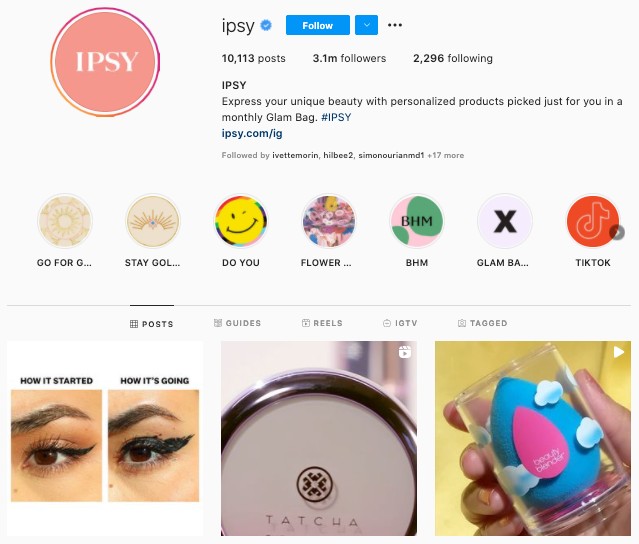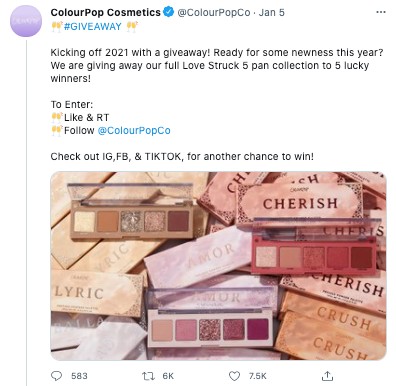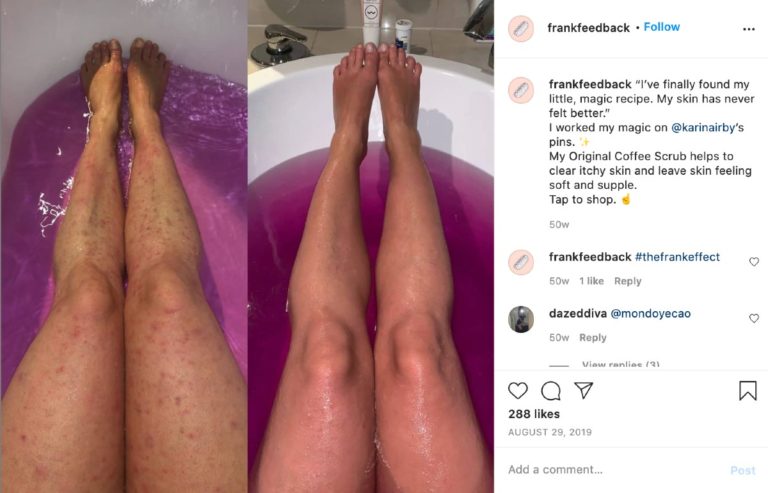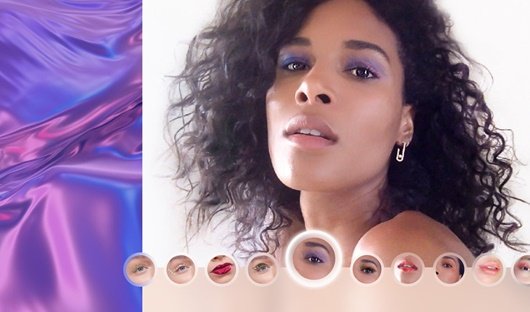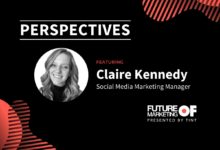Health and beauty faced a huge year in 2020.
As doors closed and commerce was forced online, the health and beauty space had to figure out the ropes of the online world. High-quality user experiences, engaging content, and easy checkouts became a necessity.
So, what’s next?
eCommerce saw 5.3% online growth in 2021 and offline commerce experienced a 1.2% decline. Yet, this growth isn’t enough to knock the biggest health and beauty brand Johnson & Johnson off the coveted shelves of CVS. With online as the third most popular shopping destination in the U.S. (the first being drug stores or pharmacies and the second mass merchandisers), the transition to eCommerce isn’t done yet.
Even if it feels like it already happened.
The future of the health and beauty industry includes, both, in-person and online experiences built on memberships, in-person experiences, and technology adoption that leads to hyper-personalization.
Where is Health and Beauty Marketing Now?
The health and beauty space faced its own set of challenges in the pandemic world.
Mass merchandisers like Sephora had to remove their samples from the floor and boutique brands had to figure out a way to stand out online (without a huge team, budget, or the time for high-quality content).
It turns out they did a great job.
As attention turned online, direct-to-consumer (DTC) brands had their chance—and they nailed the assignment. More than half of U.S. consumers have purchased from a DTC personal care or beauty brand, which is more than the number of people who have purchased:
- Clothing and apparel
- Travel and transportation
- Pet care
- Home furnishings
Social ad platforms are swimming in direct-to-consumer and Fortune 500 health and beauty brands. In addition, beauty products are the second-largest product category for engagement on Instagram, Twitter, and Facebook.
The top 5 direct-to-consumer brands don’t even have brick-and-mortar stores. Ipsy, Fenty Beauty, Morphe, Kylie Cosmetics, and Glossier use mass merchandisers like Sephora and Ulta to stock their products.
We see the same trend across the top 5 DTC brands. Their focus is to build their brand online, use mass merchandisers to sell products in-person, and capitalize on the low overhead of an online store before considering signing their own lease.
Where does this put the future of health and beauty marketing?
Here are our health and beauty marketing predictions and the upcoming trends we’re watching.
The Future of Health and Beauty Marketing
Brands Launching Membership Programs
The push towards subscription surpasses the SaaS industry. With subscriptions and memberships, health and beauty brands can create the predictable income that subscription-based business models provide. FabFitFun proves that subscriptions in this space welcomed with their 300% yearly growth and $200 million in revenue back in 2018.
Today, twenty-five percent of Americans are subscribed to a membership program and 32% not subscribed plan to do so in the next 6 months.
For health and beauty brands, subscriptions are incentivized with exclusive products and special promotions and discounts. Using giveaway strategies, brands like ColourPop Cosmetics are growing their social media audience.
This same strategy is a great way to grow memberships as well. Here are a few ideas to get the gears turning as to how you can incentivize sign-ups for your subscription service:
- Give subscribers special access to brand new products not available to non-subscribers yet
- Let subscribers get access to a pop-up or in-person experience
- Create highly engaging user-generated experiences, social contests, and campaigns, that lead to conversions
Takeaway: Health and beauty brands need to look at their Customer Lifetime Value through a subscription business model lens. How can they market the benefit of becoming a long-term customer so they create predictable and reliable income for months (and years) to come?
Creating More In-Person Experiences
In-person experiences aren’t just for Johnson & Johnson’s fancy POP display or brick-and-mortar brands. They’re for every health and beauty brand on the market.
At the smallest level, these in-person experiences for newer DTC brands can come from the unboxing experience, when they first use their product, and when they first see the promised results. A special experience worth documenting will end up on Instagram stories, posts, tweets, Facebook, and YouTube.
DTC skincare company Frank Body has been using UGC for years. “We had a very deliberate UGC strategy from day 1,” Jess Hatzis shared with Forbes. Within four years of launching on Instagram, the business generated $20 million in yearly revenue, distributed in 150 countries, and now has over 700k Instagram followers.
Creating in-person experiences that fit the future of marketing for health and beauty looks like this:
- An unboxing experience that inspires customers to share online
- Promoting user-generated content across marketing channels to promote customers to create more
- Investing in pop-up stores that give a rare experience of shopping at an exclusively DTC brand
Takeaway: Creating shareable moments and experiences that increase user-generated content (and brand reach!) is the future, for brick-and-mortar and D2C health and beauty brands.
Integrating Technology To Create a Personalized Buying Experience
Buying online is meeting technology where we all hoped it eventually would. We’re getting the chance to “try before we buy” furniture and beauty products. Integrating technology into the health and beauty space creates a future of personalized buying experiences that marketers can use to showcase the best products for individual customers.
L’Oréal jumped at the opportunity to add technology to their marketing stack with their ‘Signature Faces’ virtual makeup line. This makeup line acted as a filter their audience could use online to add to their daily look…without having to twist open a mascara tube.
This AR, VR, and AI adoption means health and beauty brands can tell their audience what makeup to buy to get the look in person.
We can’t say this is new news, with Perfect Corp partnering with Alibaba in 2019 to create the YouCam Makeup Experience. (The partnership increased Alibaba’s conversion rate by 4x). We are pointing out the continued adoption of technology that will turn virtual experiences like this into the norm.
Brands like L’Oréal can market their products directly next to the filters they make to create a personalized buying experience (and achieve that 4x conversion rate boost).
Takeaway: Adding VR, AR, and AI to marketing will increase conversions as matured technology gives people the opportunity to try before they buy like they’ve never had before.
How Health and Beauty Brands Can Prepare and Adapt to Marketing Changes
Personalization (and First-Party Data) Creates New Marketing Opportunities
Personalized marketing isn’t the future trend we’re referring to in this section. We’ve seen personalized marketing for two years now. What we’re referring to is the ability to create personalized marketing through first-party data.
When Apple launched iOS 14 in the Spring of 2021, Facebook’s immediate rebuttal explained the new update would crush small businesses that relied on third-party data to sell products. Johnson & Johnson can continue to sell their products on store shelves with heavy traffic, but what about the DTC brands trying to get their business off the ground?
That’s where memberships and subscriptions come in. By creating a membership app or website, health and beauty brands can bring in their own data that they can use to:
- Create new products based on customer’s feedback and buying behaviors
- Recommend specific products to customers based on their personal needs
- Upsell and downsell customers based on past buying behaviors
Function of Beauty’s customized hair care quiz is common practice in the space today. But, the future of health and beauty marketing is in being able to recommend products based on how customers are individually interacting with a brand.
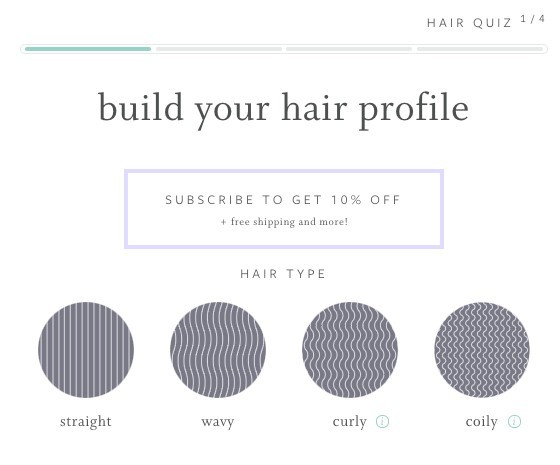
This also leads to being able to upsell based on personalized buying behaviors. Brands like Viome are personalizing health supplements based on their customer’s biome results and turning them into a monthly subscription box of vitamins, prebiotics, and probiotics. This funnel of buying a product (their biome test) and retaining customers through a subscription (of vitamins and supplements) drastically increases their customer lifetime value.
Eighty percent of respondents in an Epsilon online survey said they’re more likely to do business with a company that offers a personalized experience.
Take Action: Start marketing your subscription or membership platform that turns buying into a personalized experience made just for that one customer.
Let Nano-Influencers Do The Marketing For You
Health and beauty brands are tapping into the influencer market…big time. Estée Lauder is putting 75% of its marketing budget into the pockets of influencers to increase brand awareness, engagement, and conversions.
Nano- and micro-influencers with less than 100,000 followers are proving to be the true power players of the influencer space. With a niche highly engaged audience, these influencers can get higher engagement and conversions compared to macro-influencers with millions of followers.
The British Beauty Council’s Value of Beauty Report found health and beauty brands are making an ROI of $11.45 for every $1 spent on influencer marketing. Influencer marketing is working when done right.
Nano- and micro-influencers can help you market your:
- New products and offers
- Latest promotions and discounts
- Membership and subscription website or app
A majority of beauty videos are user-generated, and brands can turn to their users to help tell their brand story and build awareness. Health and beauty brands should work with customers who are already talking about their brand and build a long-term relationship that leads to brand awareness and conversions.
Takeaway: Engagement increases by 28% when consumers can view a mixture of user-generated product videos and official brand-authored content. Bring UGC into your marketing strategy alongside your branded content to create a holistic marketing strategy that works.
Adding User-Generated Content To Your Marketing Channels
User-generated content gets higher engagement and conversions than branded content. Health and beauty brands don’t need to only rely on UGC, but using it across their marketing channels proves to build better relationships with their audience and drive more sales, time and time again.
User-generated content is a photo, video, testimonial, or review made by a customer about a brand. It’s the Instagram story a customer takes unboxing their subscription box or the photo they tweet about how a skincare brand cleared their acne.
Shopify found that ads based on user-generated content receive 4 times higher click-through rates and a 50% drop in cost-per-click than average ads. With 37% of beauty brands discovered through ads on social media, user-generated content can catalyze the relationship between customer avatar and brand.
As Growth Guide of ColourPop, Michelle Lou explained to the Common Thread Collective,
“The biggest contributor to success lay in our ability to make ColourPop stand out in a competitive market…After price, the major wins were ads that highlighted product quality. Whether it was up-close videos of putting lipstick on and not seeing it crack or user-generated content – the advertising focused on the color payoff and how good the product looked.
It didn’t matter if the ad was pretty,” said Luo. “It mattered that it showed real people using the product.”
To get customers to create user-generated content:
- Tell them what you want to see either through instructions in your unboxing, a follow-up purchase email, or through example across your marketing channels
- Incentivize UGC creation with giveaways, discounts, and competitions
- Create an experience worth documenting!
Take Action: Incentivize your customers to create UGC to distribute across your marketing channels for higher engagement and conversion rates.
Takeaway: The Future of Health and Beauty Marketing
Health and beauty marketing experienced its own set of challenges in 2020. The pandemic pushed technology adoption and sparked interest in different business models that could help brands navigate future challenges and changes (like privacy regulations).
The future of health and beauty marketing is in:
- Creating in-person experiences (either at brick-and-mortar stores and pop-ups or at the exciting stages of the buying journey) increases brand awareness and creates consistent UGC for the brand repurpose.
- Adding a subscription model to their business pulls first-party data from customers to create a personalized shopping experience.
- Using AR, VR, and AI to improve the buying experience and help customers try before they buy in a way they’ve never had access to before.
Every week, we look at the future of marketing and keep you updated on how you can adapt and stay ahead of the latest trends (like these). Subscribe here.

